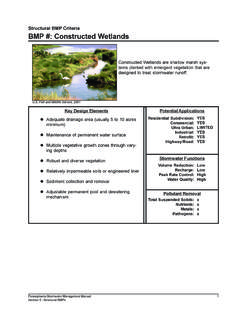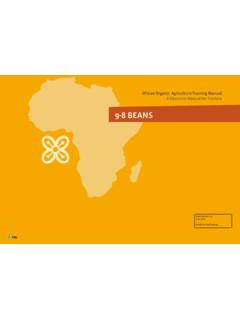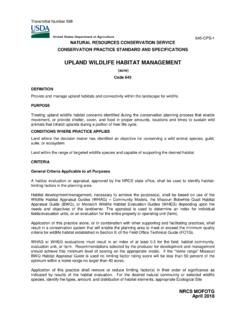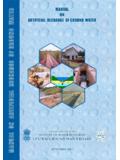Transcription of RESEARCH Manual for Vegetable Production in Botswana
1 RESEARCHOOFF Horticultural RESEARCH ProgramManual for VegetableProduction in Botswana Vision:What we want to beWe at the Department of Agricutlural RESEARCH , commit ourselves to bea center of excellence in adapting and developing appropriate and envi-ronmentally-friendly agricultural technologies and conservation of agri-cultural resources in support of sustainable and competitive agriculturein partnership with :Why we existOur mission is to identify, adapt and develop innovative technologiesthat will enable our customers to optimize productivity through:nEffective and efficient utilization of agricultural resourcesnConservation of genetic resourcesnGood agricultural management practicesWe will achieve this mission through teamwork, collaborative effort, dedi-cation, motivation and a well-resourced RESEARCH :What we believe inCustomer -Customers are our reason for being.
2 We show con-cern for our customers through continuous consultation and feedback,and constant improvement of service -Our staff is key to providing high quality commit to develop, manage and grow our staff in order to instill ahigh standard of work ethics and improve their job competences -We exist to provide customer focused service. Wepledge to deliver high quality service in a timely, effective and -We cherish high standards of work ethics. Ourcustomers are quaranteed courtesy respect, selflessness, fairness,sensivity and -We shall own the future by being innovative. Wecommit ourselves to being innovative and proactive in order to match therequirement of the -Our environment is our base. We pledge to be sen-sitive to our environemnt by promoting its sustainable -Stakeholders are valued partmners in agriculturaldevelopment.
3 We believe in involving stakeholders in planning and imple-menting process in order to promote a viable and sustaible -We recognize gender sensitivity as very impor-tant in agricultural development. We commit to develop and supportgender sensitive policies and programmes. GOVERNMENT OF BOTSWANAMINISTRY OF AGRICULTUREM anual for vegetableproduction in BotswanaPREPARED BY THE HORTICULTURAL RESEARCH PROGRAM Edited by: Isaac Bok Mogapi Madisa Douglas Machacha Motshodi Moamogwe Ketseemang More First Published 2003. Reprinted 2006 Published by the Deaprtment of Agricultural RESEARCH Private bag 0033 Gaborone, Botswana .
4 E-mail: Website: Design & Layout by Isaac Bok Copyright @ DAR 2006 All rights reservedTable of contentsForeword ..iAknowledgements ..iiIntroduction ..1 Planning Production for the market ..1 Vegetable seedling Production and nursery and disease management ..6 Cruciferae Cabbage ..7 Kale and Rape ..9 Solanaceae Tomato .. 13 Green pepper .. 20 Potato .. 22 Allilaceae Onion.
5 26 Chenopodiaceae Beetroot .. 30 Swiss chard .. 32 Umbelliferae Carrot .. 34 Convolvulaceae Sweetpotato .. 36 Cucurbitaceae Pumpkins, squashes, 39 Poaceae Green mealies .. 44 Fabaceae Green beans .. 45 Nutritional deficiencies in horticultural crops .. 47 Appendix .. 50 FOREWORDThis Manual is intended to be a guide to the horticultural extensionpersonnel, horticultural producers as well as agricultural institutionsin their endeavour to improve productivity in the horticultural currently imports substantial quantities of vegetables fromneighbouring countries amounting to millions of Pula annually.
6 This ispartly owing to the fact that the necessary information on vegetableproduction locally is not readily available to assist producers in Manual is therefore designed to provide guidelines on seedlingproduction and management, plant spacing, cropping programme, soilfertility, crop protection as well as marketing National Master Plan for Agricultural Development identifiedvegetable Production as one of the priority areas with potential fordevelopment in Botswana . I hope, therefore, that this Manual willcontribute modestly to the goal of improving Vegetable productionin the good number of staff of the Department of Agricultural Researchwere involved in conceptualisation, writing, reviewing, editing, andproduction of this Manual . Their valuable contributions are herebygratefully L. M. Mazhani Director, Department of Agricultural RESEARCH MAY 2003iACKNOWLEDGEMENTSThe contents of this Manual remains largely the same as in the previousedition.
7 I therefore would like to thank all those who contributed towardsthe first edition for the work well done. The overwhelming demand for themanual from farmers, lecturers, and students is a testimony that theinformation contained in it is very useful. This has been the driving forcein persuading management to foot the bill for this edition, an investmentalso appreciated. I thank our Public Relations office, in particular, Mr. B. for acting as our mouth piece in dealing with management in also want to thank those who used the first edition, for the encouragementand coming up with suggestions to fine-tune this edition. I am grateful toMr. G. Mcleod at TCE for devoting his time to reviewing the first editionand bringing our attention to the numerous mistakes made in that contribution from my collegue Dr.
8 G. Wiles which came just when themanual was about to be taken for printing is very much appreciated. LastlyI want to record my appreciation to Ms. M. Moamogwe for making my lifeeasier, particularly in putting together contributions from different peopleand doing the final BokSenior Agric. RESEARCH Officer Horticultural RESEARCH ProgramiiINTRODUCTIONV egetables are a complex group of a wide variety of different types of crops. Most vegetablesare annuals or biennuals, completing their life-cycle in one or two years, respectively. They havediverse forms of propagation: by seed or vegetative parts. They may be herbaceous, viny, shrubbyor tree-like in growth habit. They differ in growth requirements. Many vegetables can be grownunder a wide range of conditions, while others have more specific requirements for water,temperature and light.
9 Thus in one place several species can be grown only during certain timesof the year. The importance of vegetables as a source of numerous essential nutrients in the dietneed not be over-emphasized. With increasing demand for farm-fresh produce and new alternativespecialty crops, vegetables also play a major role in improving the income of small farmers inparticular. It is estimated that local horticultural Production accounts for only about 20% of thenational demand, the rest of the requirement being met from imports. This shows that there ispotential for increasing Production of horticultural crops by local farmers. The Production of mostvegetables in the country is seasonal, which is mainly attributable to the variation in climaticconditions during the of vegetables in nutritionVegetables as a group constitute an important component in a human diet.
10 They are the mostimportant sources of minerals in addition to being excellent sources of Vitamin A, C and Bcomplex. These elements are essential for the proper functioning of different organs of the bodyand hence their deficiency in the diet have an adverse effect on the physiology of the humanbody. Examples include inability of the eye to see normally in dim light caused by deficiency ofvitamin A, and development of weak bones resulting from lack of calcium. Shortage of iron inthe diet also causes a condition known as anaemia. Some vegetables can be good sources ofenergy particularly root crops. Legumes and leafy vegetables are generally rich in contribution of vegetables as a source of fibre is very important, especially where low fibrediet is consumed.








